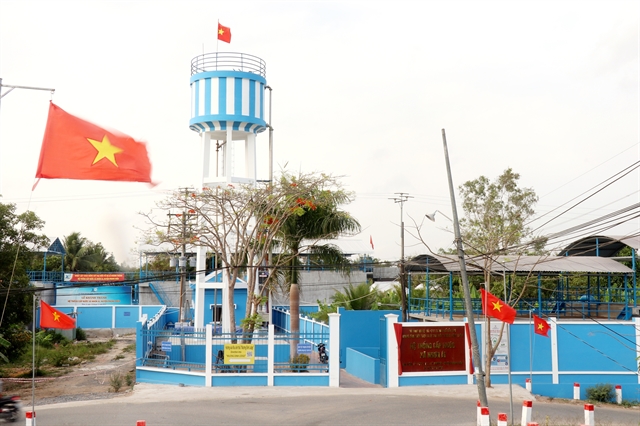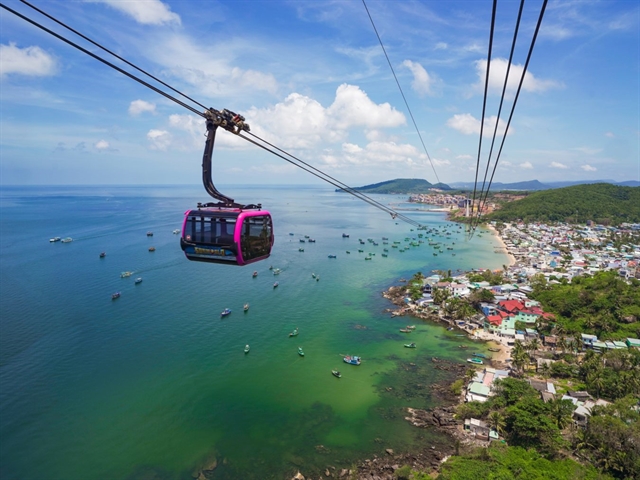 Society
Society

 |
| Triệu Đức Huy, deputy director of the National Centre for Water Resources Planning and Investigation (NAWAPI), under the Ministry of Natural Resources and Environment. VNA/VNS Photos |
To support the construction of water supply facilities in highland and water-scarce areas, the National Centre for Water Resources Planning and Investigation (NAWAPI), under the Ministry of Natural Resources and Environment, has been tasked with investigating and assessing underground water sources in these regions. It aims to provide a long-term solution to the shortage of clean water for ethnic communities. NAWAPI deputy director Triệu Đức Huy speaks to Vietnam News Agency about the project.
In Việt Nam, 90 per cent of the urban and rural populations in lowland areas have access to clean water that meets the Ministry of Health’s standards. However, nearly half of the population in mountainous, remote and isolated areas still lacks access to clean water. What is your assessment of this issue?
Access to clean water for people living in mountainous, remote and isolated areas is a significant concern for the Party and the State. Numerous programmes and projects have been implemented to support clean water in highland areas, but many people in these regions still do not have access to clean water. The reasons include the vast number of water-scarce areas, rugged terrain, a scattered population and difficult supply conditions.
Additionally, challenges arise from selecting and investing in appropriate water supply models that align with local water practices, technological solutions and the costs, along with issues in operating and maintaining water sources.
Given the difficulties with water resources in highland and other areas, what specific measures has NAWAPI implemented to establish sustainable water supply models?
NAWAPI has been assigned various tasks related to investigating, assessing and identifying water sources to support the construction of water supply facilities in highland and water-scarce areas.
For example, NAWAPI has discovered and evaluated the potential of several key water sources in challenging areas such as the islands and island clusters of Thanh Lân and Trà Bản in the northern province of Quảng Ninh; Lý Sơn Island in the central province of Quảng Ngãi, Hòn Tre and Hòn Chuối Islands in the southwestern province of Kiên Giang; Bạch Long Vỹ Island in Hải Phòng City and in the provinces of Ninh Thuận, Bình Thuận and Hà Giang; as well as 40 remote areas in ten southern provinces. These efforts directly address the needs of local communities and contribute significantly to the national target programme for clean water supply.
 |
| Ethnic minority residents in Tiên Yên District in the northern province of Quảng Ninh have access to clean water. |
Notably, NAWAPI has recently completed the investigation and exploration of underground water sources in highland and water-scarce areas project. This project is one of three projects assigned by the Government to the Ministry of Natural Resources and Environment. The goal is to identify underground water sources with sufficient quantity and quality to ensure stability and longevity, thereby enabling the development of sustainable water supply models.
During the project's implementation, the islands' distance from the mainland and the scarcity of water posed significant challenges. However, when NAWAPI conducted water source exploration on the islands, the leadership, officials and residents provided strong support, making the construction on the islands relatively smooth and mitigating some of the difficulties presented by natural conditions.
How have local authorities and residents responded to these results, especially during the recent severe droughts and saltwater intrusion issues?
From the project’s inception to the construction and handover of the facilities, the local residents and authorities were very eager and hopeful to quickly access sources to alleviate the water shortages they face during the dry season.
When viable water sources were found in some areas, even before water supply stations could be built, NAWAPI promptly handed over the findings to local authorities. This allowed for immediate extraction and distribution to address the urgent need for drinking water.
For instance, during the severe drought and saltwater intrusion in 2020 in the Mekong Delta and Central Highlands, NAWAPI installed and handed over 13 water treatment facilities with a capacity of 4,300cu.m per day. These facilities provided safe drinking water to approximately 72,000 people, across nine provinces in these critical regions.
What plans does NAWAPI have to ensure water security and safe water supply for residents?
To proactively secure clean water and ensure a safe water supply for residents, NAWAPI is focusing on specific solutions, such as rotating and diversifying existing water sources to improve supply, restoring and rehabilitating depleted, polluted, or saline water sources for use and actively developing surface and groundwater storage facilities within aquifers to support water extraction and supply.
One of the challenges with water supply projects in highland and water-scarce areas is the cost of water that residents have to bear. Additionally, traditional water usage practices can lead to water supply projects becoming less effective and sustainable over time.
The revised Law on Water Resources has introduced preferential policies for water exploitation investment projects. Specifically, Clause 2, Article 4 of the 2023 Law on Water Resources prioritises State investment in the exploration and exploitation of water sources, offering incentives for water supply projects that provide drinking and production water to ethnic minority communities, mountainous areas, border regions, islands and economically disadvantaged areas with scarce freshwater. It also facilitates access to drinking water for the poor, women, children, people with disabilities and other vulnerable groups.
With these new provisions in the revised law, it will be easier to mobilise social resources for water supply projects. These projects will benefit from incentives such as tax reductions and exemptions, as well as waived or reduced fees for water resource exploitation rights, as stipulated in Clause 2, Article 73 of the 2023 Law on Water Resources. — VNS




